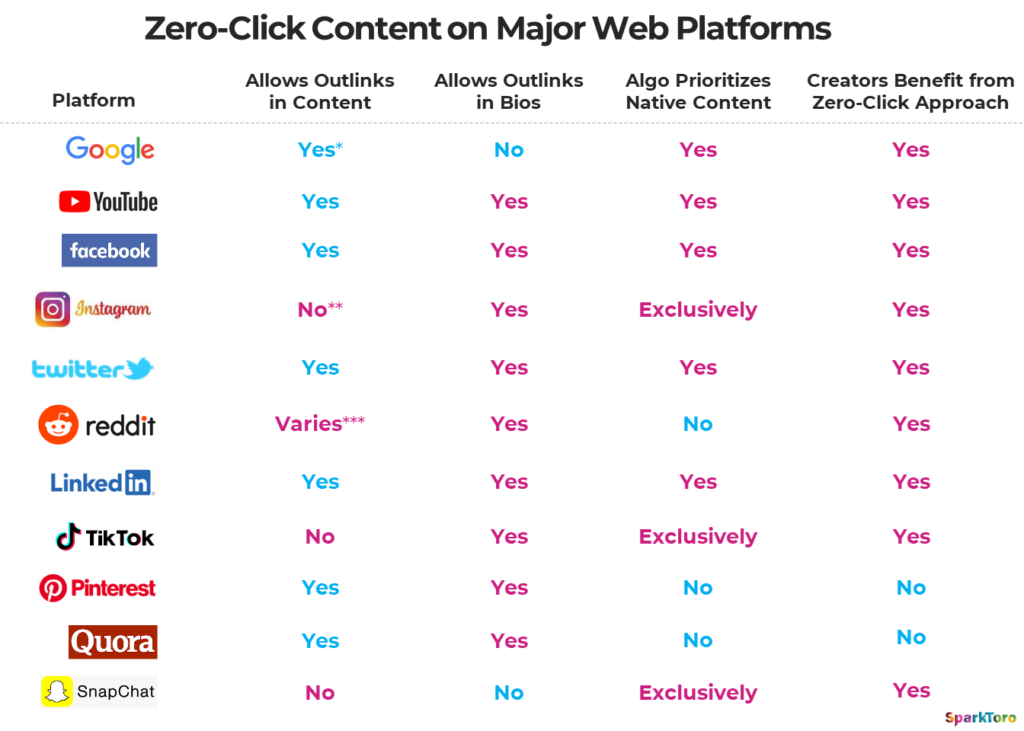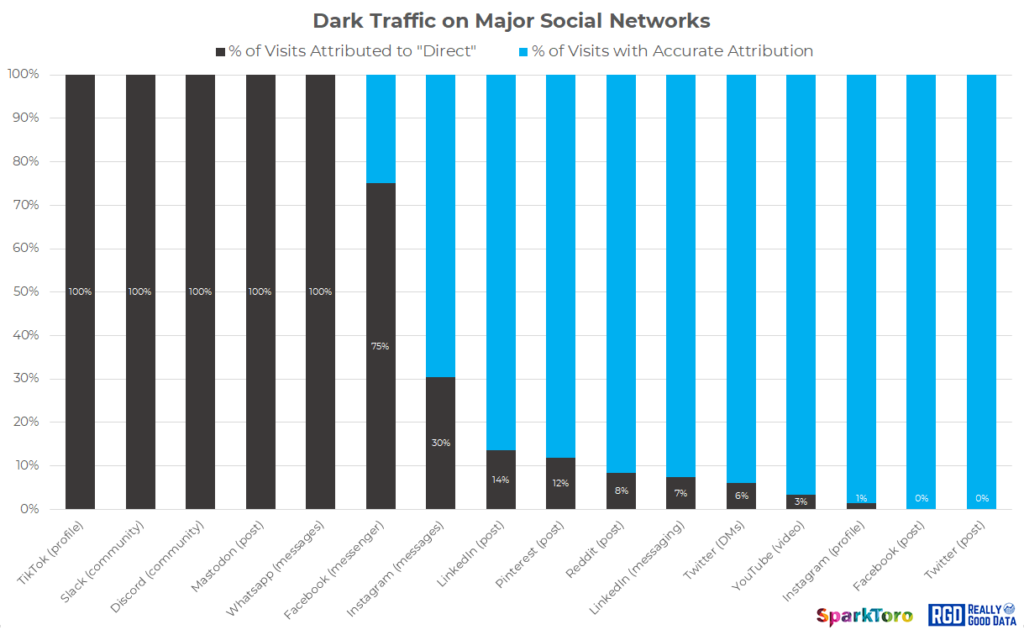Welcome to another edition of 5-Minute Whiteboards. And folks, we’ve got a doozy of a topic. Yes, I’m being intentionally provocative. But it’s because things really have changed in the last decade, yet too many of us are still asked to invest in marketing as though it’s 2014.
In just seven minutes, I’m going to try to change your mind about how marketing works in 2024 (and doesn’t), and the hard conversation we need to have with the C-suite, clients, team members, and those who believe every sale can be perfectly attributed to all the marketing channels and tactics that contributed. I’m also trying out a “digital” whiteboard format that’s likely to be my go to for the next few episodes (it’s easier to read, and the graphics can be embedded/shared with less friction). Let me know what you think of this format in the comments 😉
The Way We’ve Done Digital Marketing for 20 Years is Ending
Well, marketing friends, we gotta have a serious talk. Because the way we’ve done marketing for the last twenty years is ending. I’m serious. I believe that Rand in 2010 would have told you that digital marketing was all about being able to track every view and every click, so that when conversions happened, we could perfectly attribute them, is wrong today. Back then, we could say: “Oh, this piece of content, this advertisement, this PR investment, this word-of-mouth effort is worthwhile because it turned into this trackable, perfectly attributable series of events in our analytics.”
It doesn’t work this way anymore.
That’s because clicks are dying and attribution is dying. There’s only one way forward.
What’s Killing Clicks?
“Tell me, Rand, what killed all these clicks?”
I’m going to tell you every one of the major search, social, and content platforms has an incentive to keep you there. LinkedIn wants to keep you on LinkedIn. Twitter wants to keep you on Twitter.

So does Facebook, so does Reddit, so does YouTube, so does Instagram, so does TikTok, every one of these. So, they all bias to algorithms that penalize links and reward native content—zero-click content.
What’s Killing Attribution?
Attribution was killed by a variety of things: Apple’s cookie changes absolutely had a big effect when they pulled back on third party cookies inside safari that took a huge hit. Anti tracking and privacy laws in California, Canada, New York, and the EU, and many of those cookie permissions and do-not-track protocols have rolled out globally.

Then there’s the massive adoption of ad blockers. We’re talking about a third to half of all Internet users using an ad blocker on one or more of their devices. And and ad blockers don’t just block ads, they block all of the tracking that we do as well.
Multi device journeys mean that tracking someone, even with fancy browser fingerprinting (illegal in many parts of the world, but still technically allowed in the US), is rendered impossible unless they log in with the same credentials on all those devices.
The adoption of mobile and tablet devices, and the domination of apps that happen inside of them further hides attribution data. All of that in-app activity, those hours that people spend inside their apps on their phone/tablet cannot be perfectly attributed back to the same visits that they make on the web except when it is through the same ad/login tracking system. That means only a few big companies (mostly Google, Apple, and Meta) have access to that data.
And then there’s the zero click problem.
As an Internet user, I don’t click on things the way I used to. You don’t click on things. We, as a collective Internet, stopped clicking. Part of that was the platforms training us not to click. And part of that is our own predilection for consuming content in native formats on apps and websites.

Last, but not least, there’s dark traffic. We studied this in-depth at SparkToro last year, noting that more than half of the major social networks hide some or all of their referral data.
Show Me the Receipts
We have the data to back up these assertions about the decline of both clicks and attribution. This isn’t just conjecture. I can prove it to you. We did a study in January of this year with Datos looking at who sends traffic on the web, and it is overwhelmingly search.

Google, Microsoft/Bing, and DuckDuckGo account for ~70% of all traffic referrals, every click that’s sent out. But, where people are spending time is NOT 70% search. That is not where 70% of visits go.

In fact, search is only ~10% of all visits (and yes that includes AI search players like Perplexity). Ten percent. We spend time in social and productivity tools like our email, on news websites, buying things in e-commerce, on video and audio platforms.
If you try to prove acquisition via traffic referral data you will become Google’s fool. Here’s why: Everything we consume in social, news, productivity (like our emails), video and audio (YouTube and podcasts), and specific sectors like financial sites, travel sites, health sites, etc. leads us to potential searches. It exposes us to ideas, brands, problems… things we need to research.
If see something about a brand of risotto on a recipe website that looks interesting, it’s rare that I directly have a link to click. And often if I do, I still don’t bother! Because I’m used to zero-click consumption. Instead, later on, I might search in Google for that type of risotto.
When I go to Google and search… who gets the credit?
Google does.

What’s the Solution to the Zero-Click, Impossible-to-Attribute World of Marketing in 2024?
The way forward is to go where your audience is being influenced.
For example, let’s say I want to find the best rice for making risotto. I might search Google to solve that problem. But I might also watch videos on TikTok or Instagram. I could turn to my favorite recipe blog. I might ask the chefs at my favorite Italian restaurant.
Millions of people make risotto around the world every week. But, only 0.1% of them are searching Google for “best rice to make risotto.” If we wanna know how to influence those millions of people, we need to uncover ALL the sources that influence them. We need to know all the ways they’re nudged to buy one particular brand or kind of rice or another. We want the websites risotto searchers visit. We wanna know the social networks and social accounts that they use and follow. We want to know the podcasts and the Youtube channels and the subreddits that they visit.
Even if we’re exclusively thinking about a Google search for the “best rice for risotto,” I worry. I worry that an old school SEO looks at the potential click through rate and says this isn’t a keyword worth targeting.
Right? It’s not worth ranking for because Google’s showing an instant answer. There’s no clicks. But, there is a behavior-biasing result.

If you’rein the grocery store and search for “best kind of rice for risotto,” you’re probably going to buy arborio. Because Google’s big, bold answer at the top of the search result is Arborio. (Guess what: as an avid maker of risotto, and someone who’s been perfecting the dish for years, I can promise you that arborio is not the best kind of rice for risotto. You should be buying Carnaroli if you can).
The problem with doing marketing work to change this result and nudge Google to show Carnaroli (or even better, your particular brand of Carnaroli) is that even if you succeed, it lacks attribution. You can’t prove to your boss that by taking over that ranking you’ve provided any value to the company. Because not only are most of the searches going to end without a click, even those that DO send traffic won’t tell you what keyword referred them. Google killed that ability to see keyword data almost ten years ago.
Success Comes By Reaching People Through the Right Sources of Influence
There’s a brand of aged carnaroli rice, which which is excellent for risotto, and highly regarded by professional chefs and home cooks, too. It’s what I almost always use, and over the last few years, I’m obsessed with this stuff. It’s called Acquerello.
Acquerello was virtually unknown in the United States ten years ago. But in the last decade, they’ve massively grown their US sales by investing in tactics that cannot be perfectly attributed, no matter how sophisticated the AI-powered, econometrics/MMM software you’re using might be.
Acquerello recognized that to get into the major US publications, they needed an affiliate program, so they started selling through Amazon (even though it wasn’t a great brand positioning match). Then their PR team pitched folks like the editors at Bon Appetit (below).

Acquerello started nudging chefs all over Italy, where tourists often experienced great risotto for the first time, to include their brand name on their menus, and put their rice packaging on visible shelves in the restaurants. They started a huge word-of-mouth campaign with Italian restaurants and chefs in major US cities. They sponsored events in other European and North American countries. They worked with specialty retailers in the US to carry their product. They expanded their online sales distribution.
Every one of these things positively contributed to Acquerello’s success. But, almost none of them can be attributed to a particular sale. Tragically, most of the very smart, savvy, sophisticated American tech CEOs and CFOs I know, who grew up on attribution models to direct their spend, would veto every single thing Acquerello did because they couldn’t PROVE that it led to increased sales.
“Correlation, not causation means we might be throwing our money away,” they’d say.
What I’m suggesting to you is that digital marketing in 2024 is a lot like marketing in 1964. It is getting the right message that appeals to the right people in the right places and at the right time to the right audience.
And I’m urging you to invest in it and to optimize for it using lift-based measurement and not attribution.
Because attribution fundamentally don’t work anymore. When you make marketing investments based, instead, on knowing who your audience is and where/how you can influence them, you can massively improve your results.